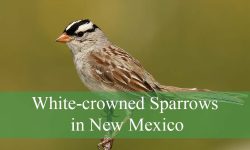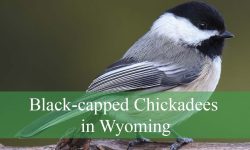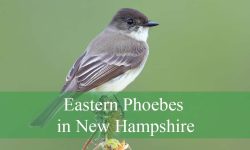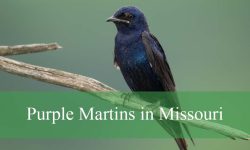Bats play a vital role in New Hampshire’s ecosystems, controlling insect populations and supporting overall environmental health. Many species, however, face threats from habitat loss and white-nose syndrome.
New Hampshire hosts a variety of fascinating bat species, from the large Big Brown Bat to the tiny Eastern Small-Footed Bat. Each species has distinctive features, roosting habits, and behaviors that make them unique.
This guide offers detailed descriptions, identification tips, and advice on the best times and places to observe 10 bat species in New Hampshire, making it easy for wildlife enthusiasts to appreciate these nocturnal mammals.
Common Bats Found in New Hampshire
Big Brown Bat (Eptesicus fuscus)
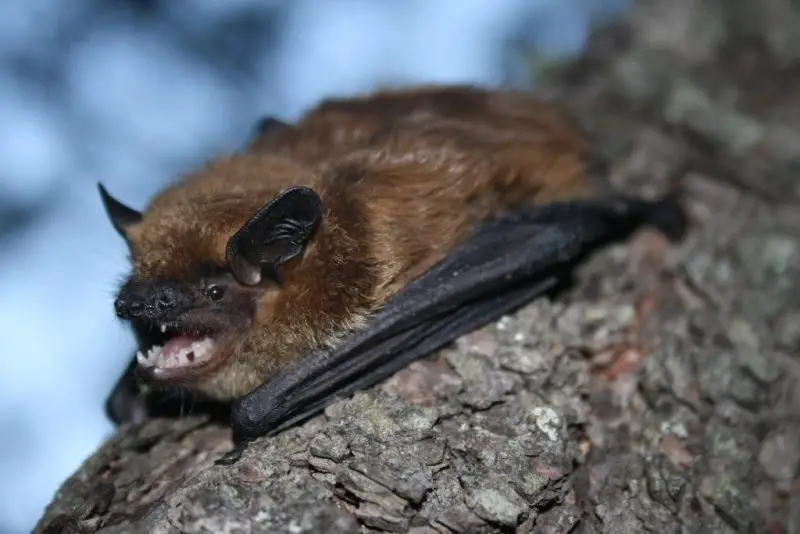
The Big Brown Bat is one of the largest and most common bats in New Hampshire, with a wingspan of around 12 inches and a body length of 4–5 inches. Its fur is glossy and brown, while the face, ears, and wings are darker. This species is strong and robust, capable of enduring cold temperatures better than many other bats.
Big Brown Bats are easily recognized by their large size and relatively short, broad wings, which make them powerful fliers. They often roost in buildings, attics, barns, and occasionally tree cavities. They prefer dark, undisturbed areas for daytime roosting and emerge at dusk to forage.
These bats are insectivores, feeding primarily on beetles, moths, and other flying insects. Big Brown Bats are especially valuable in controlling agricultural pests, such as cucumber beetles. Their hunting style involves slow, maneuverable flight near vegetation and water sources where insects are abundant.
Fun facts: Big Brown Bats can live up to 19 years in the wild, which is unusually long for a small mammal. They hibernate during winter in caves, mines, or attics, entering a state of torpor to conserve energy. Observers often spot them in late spring and summer at dusk near water bodies.
Little Brown Bat (Myotis lucifugus)

The Little Brown Bat is smaller than the Big Brown Bat, with a wingspan of about 9–10 inches and a body length of 3–3.5 inches. Its fur is glossy brown, with lighter underparts. Historically common across New Hampshire, this species has suffered significant population declines due to white-nose syndrome.
Identification is straightforward due to its small size, short muzzle, and delicate wings. Little Brown Bats often roost in buildings, tree cavities, and under bridges. They prefer roosts near water sources, such as ponds or streams, which provide abundant insects for feeding.
Little Brown Bats are insectivorous, consuming mosquitoes, flies, beetles, and midges. Their agile flight allows them to catch prey in mid-air, and they can eat up to half their body weight in insects each night. This makes them important for natural pest control in both urban and rural areas.
Fun facts: Little Brown Bats can live up to 6–7 years in the wild, with some reaching 30 years under ideal conditions. They hibernate in cold, humid environments during winter and migrate short distances to suitable hibernation sites. Spring and summer evenings near water are the best times to observe them.
Northern Long-Eared Bat (Myotis septentrionalis)
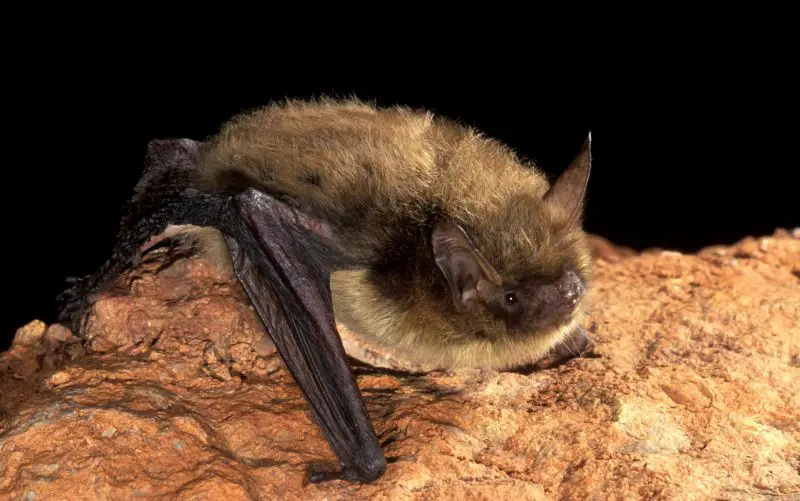
The Northern Long-Eared Bat is a small, delicate species with a wingspan of 9–10 inches and a body length of 3–3.5 inches. Its most distinguishing feature is its long, prominent ears, which extend nearly to the tip of its nose. Its fur is light brown to golden brown on the back, with paler underparts.
This bat roosts primarily in hardwood trees, often under loose bark or in small cavities. During the day, it remains hidden and emerges at dusk to hunt insects. Its slow, maneuverable flight makes it highly adapted to forested habitats, where it can navigate dense trees with ease.
Northern Long-Eared Bats feed mainly on moths, beetles, and other small flying insects. Their echolocation calls are soft and high-pitched, allowing them to detect prey in cluttered environments. This species is highly vulnerable to white-nose syndrome and habitat loss, and it is listed as federally threatened.
Fun facts: They are extremely long-lived for their size, sometimes exceeding 10 years. Observation is best during late spring and summer evenings in forested areas. Despite their small size, they are highly skilled hunters and play a crucial role in forest ecosystems.
Eastern Red Bat (Lasiurus borealis)

The Eastern Red Bat is medium-sized, with a wingspan of about 11–13 inches and a body length of 3.5–4 inches. Its fur is bright reddish-orange with some white patches, giving it a striking appearance. This species is solitary and roosts in foliage rather than caves or buildings.
Identification is easy due to its reddish color and tree-roosting habits. Eastern Red Bats often hang from tree branches, camouflaged among leaves. They are migratory, traveling south during winter to warmer climates, and return to New Hampshire in spring.
Diet consists mainly of moths, beetles, and other flying insects. Eastern Red Bats hunt from the forest canopy, using agile flight to capture prey. They are nocturnal and rely on echolocation to navigate and hunt efficiently at night.
Fun facts: Eastern Red Bats are among the few North American bats that migrate long distances. They give birth to twins each summer, a relatively small litter compared to other mammals. Observation is easiest during summer evenings in wooded areas.
Hoary Bat (Lasiurus cinereus)

The Hoary Bat is the largest bat in New Hampshire, with a wingspan of 14–16 inches and a body length of 4–5 inches. Its fur is dark brown with frosted tips, giving a “hoary” or frosted appearance. This solitary bat prefers forested habitats and rarely roosts in human structures.
Identification is marked by its large size, frosted fur, and long wings. Hoary Bats roost in tree foliage and are highly migratory, moving southward in winter to avoid cold temperatures. They are most active at dusk and night, hunting insects over open spaces or forest edges.
Their diet consists mostly of moths, beetles, and other flying insects. Hoary Bats are strong fliers, capable of covering large distances during migration. They use echolocation to detect prey and avoid obstacles, hunting mainly in open or semi-open habitats.
Fun facts: Hoary Bats are solitary and rarely seen in groups. They are known to migrate over 1,000 miles each year. Observation is best during late summer and early fall near forest edges or water sources.
Silver-Haired Bat (Lasionycteris noctivagans)
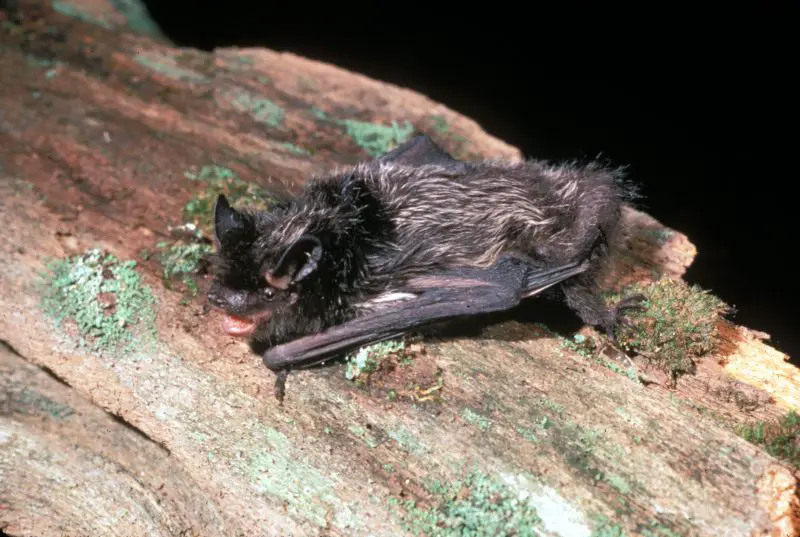
The Silver-Haired Bat is medium-sized, with a wingspan of 11–12 inches and a body length of 3.5–4 inches. Its dark brown to black fur is tipped with silvery-white, giving it a frosted appearance. It is a solitary, tree-roosting species often found in mature forests.
Identification is straightforward because of the distinctive silver-tipped fur and black face. Silver-Haired Bats typically roost in tree cavities, under loose bark, or in hollow logs. They are rarely found in buildings and prefer forested areas near streams or lakes.
These bats feed mainly on moths, beetles, and other flying insects. Their slow, maneuverable flight allows them to forage along forest edges and above water. They use echolocation to navigate and capture prey in cluttered habitats.
Fun facts: Silver-Haired Bats migrate to southern regions in winter and can live up to 12 years. Observation is easiest during summer evenings along forest edges and near water. Despite their small numbers, they play an important role in controlling insect populations.
Eastern Small-Footed Bat (Myotis leibii)

The Eastern Small-Footed Bat is one of the tiniest bats in New Hampshire, with a wingspan of 8–9 inches and a body length of 2.5–3 inches. Its fur is dark brown with lighter underparts, and it is characterized by unusually small feet compared to other Myotis species.
Identification relies on its small size, small feet, and short muzzle. This species roosts in rock crevices, talus slopes, and occasionally in buildings. During winter, they hibernate in cool caves and mines. They prefer habitats near water and forested slopes for feeding.
Diet consists primarily of small flying insects such as midges and beetles. Eastern Small-Footed Bats forage slowly, often close to the ground or vegetation. Their echolocation calls are quiet and high-pitched, adapted for navigating complex environments.
Fun facts: They are state-listed as endangered due to habitat loss and susceptibility to white-nose syndrome. Despite their small size, they are efficient predators of insects. Summer evenings along forested hills and rocky slopes offer the best opportunities for observation.
Tricolored Bat (Perimyotis subflavus)
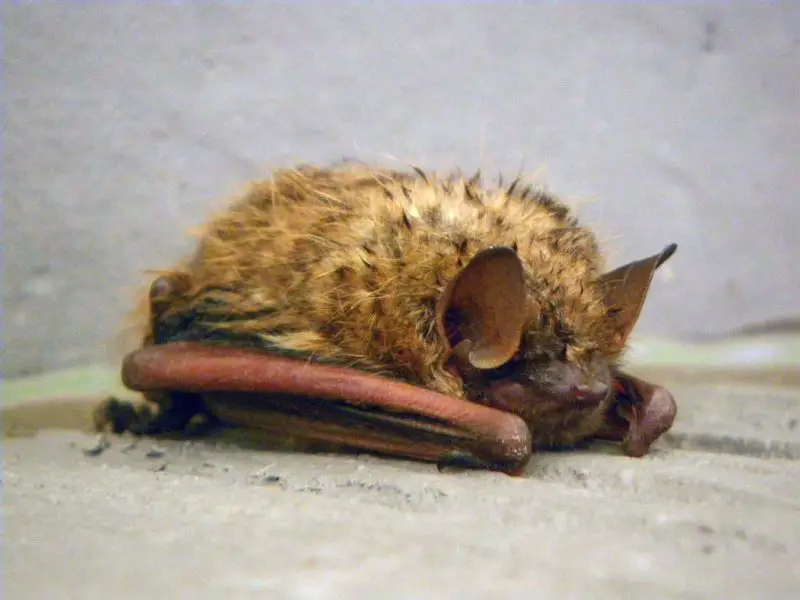
The Tricolored Bat is small, with a wingspan of 9–10 inches and a body length of 3–3.5 inches. Its fur has three color bands on each hair: dark gray at the base, yellowish in the middle, and dark at the tip, giving it a tricolored appearance.
Identification is based on size and distinctive fur coloring. They roost in leaf litter, tree cavities, and under bark during summer and hibernate in caves and mines during winter. Tricolored Bats are highly vulnerable to white-nose syndrome and are considered endangered in New Hampshire.
These bats feed on moths, flies, and beetles. They have a slow, fluttering flight and forage low over water and forest openings. Their small size allows them to maneuver easily in cluttered habitats.
Fun facts: Tricolored Bats often give birth to twins, which is unusual among Myotis species. Observation is best during summer evenings near streams, ponds, and forest edges. Their population decline makes sightings increasingly rare.
Seminole Bat (Lasiurus seminolus)

The Seminole Bat is a rare vagrant in New Hampshire, more commonly found in the southeastern U.S. It has a wingspan of 11–13 inches and a body length of 3.5–4 inches. Its fur is reddish-brown, similar to the Eastern Red Bat, with some yellowish highlights.
Identification relies on its reddish fur, large size, and tree-roosting behavior. Seminole Bats are solitary, roosting among leaves of hardwood and pine trees. They are migratory, traveling north in the summer and south in winter, which explains occasional sightings in New Hampshire.
Diet consists mainly of moths and other flying insects. They forage in forests and along forest edges, using agile flight to capture prey. Like other tree-roosting bats, they rely heavily on echolocation for hunting.
Fun facts: Seminole Bats are among the few long-distance migratory bats in eastern North America. They are rarely observed in New Hampshire, making sightings noteworthy for bat enthusiasts. Summer nights in forested areas offer the best chance of spotting them.
Rafinesque’s Big-Eared Bat (Corynorhinus rafinesquii)
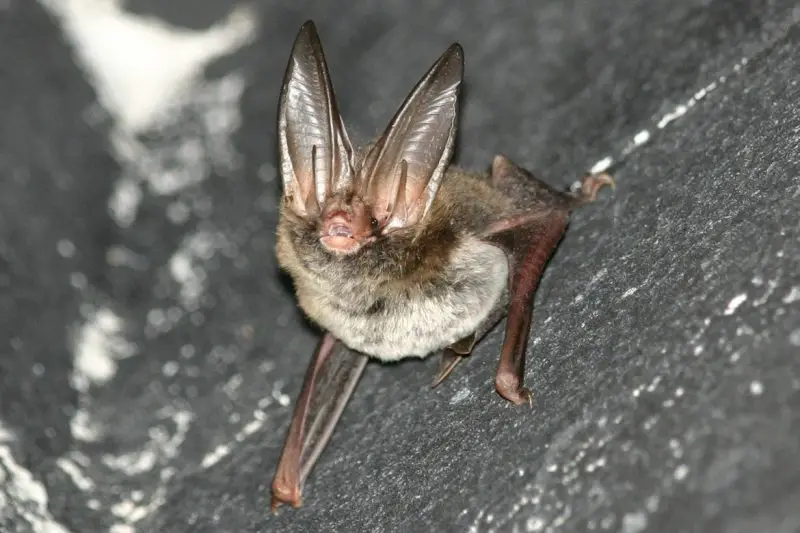
Rafinesque’s Big-Eared Bat is medium-sized, with a wingspan of 12–13 inches and a body length of 3.5–4 inches. Its most distinguishing feature is its exceptionally large ears, which are nearly as long as its body. Its fur is grayish-brown with lighter underparts.
Identification is based on the enormous ears and long, narrow wings. This species roosts in caves, hollow trees, and abandoned buildings. Although primarily found in the southeastern U.S., rare vagrants may occasionally appear in New Hampshire.
These bats feed mainly on moths and beetles, using their large ears to detect prey through passive listening as well as echolocation. They are nocturnal and tend to forage along forest edges and open areas.
Fun facts: Rafinesque’s Big-Eared Bats are highly sensitive to disturbance and avoid heavily trafficked areas. Observation is extremely rare in New Hampshire due to its primarily southern range, but forested regions in late summer offer the best chances.
Best Times and Places to Observe Bats in New Hampshire
Bats in New Hampshire are most active at dusk and during the early evening, when they leave their roosts to hunt insects. The spring and summer months provide the best opportunities to observe them, as insects are abundant and bats are actively feeding and raising their young.
Ideal observation locations include forests, forest edges, and mixed woodlands, where tree-roosting species such as the Eastern Red Bat, Hoary Bat, and Northern Long-Eared Bat are often found. Water bodies such as ponds, streams, and rivers attract insects and are excellent places to see species like the Big Brown Bat and Little Brown Bat hunting.
Some species, like the Big Brown Bat and Little Brown Bat, frequently roost in human structures such as barns, attics, and bridges, making them easier to spot near rural or suburban areas. Solitary tree-roosting bats, including the Hoary Bat, Eastern Red Bat, and Silver-Haired Bat, are best observed in quiet, undisturbed forested areas.
Migratory species, such as the Hoary Bat and Seminole Bat, can occasionally be seen during late summer and early fall as they move south for the winter. For all bat species, warm, calm evenings with active insect populations offer the highest chance of sightings.
FAQs About Bats in New Hampshire
What species of bats are found in New Hampshire?
New Hampshire is home to several bat species, including the Big Brown Bat (Eptesicus fuscus), Little Brown Bat (Myotis lucifugus), Northern Long-Eared Bat (Myotis septentrionalis), Eastern Red Bat (Lasiurus borealis), Hoary Bat (Lasiurus cinereus), Silver-Haired Bat (Lasionycteris noctivagans), Eastern Small-Footed Bat (Myotis leibii), Tricolored Bat (Perimyotis subflavus), and occasionally vagrant species like the Seminole Bat (Lasiurus seminolus) and Rafinesque’s Big-Eared Bat (Corynorhinus rafinesquii).
When is the best time to observe bats in New Hampshire?
The best time to observe bats is at dusk and during early evening in the spring and summer months, when insects are plentiful, and bats are actively feeding. Migratory species, such as the Hoary Bat and Seminole Bat, may also be observed in late summer and early fall during their seasonal movements.
Where do bats in New Hampshire typically roost?
Bats roost in a variety of locations depending on the species. Some, like Big Brown and Little Brown Bats, often use attics, barns, and bridges, while tree-roosting species, such as the Eastern Red Bat, Hoary Bat, and Silver-Haired Bat, prefer trees, tree cavities, or under bark. Rock crevices and caves are used by species like the Eastern Small-Footed Bat and Tricolored Bat during hibernation.
What do New Hampshire bats eat?
All bat species in New Hampshire are insectivores. They primarily feed on moths, beetles, flies, midges, and other flying insects, making them important for natural pest control. Some species hunt near water sources, while others forage along forest edges or open areas.
Are any bats in New Hampshire endangered or threatened?
Yes, several species are at risk. The Little Brown Bat, Northern Long-Eared Bat, Eastern Small-Footed Bat, and Tricolored Bat are listed as endangered or threatened due to white-nose syndrome, habitat loss, and low reproductive rates. Conservation efforts are critical for their survival.
Can bats in New Hampshire carry diseases?
Bats can carry rabies, but the risk to humans is very low if bats are not handled. It is important to never touch or disturb bats and to keep them out of living spaces. Vaccinating pets and using proper precautions around bats further reduces the risk.
How can I help conserve bats in New Hampshire?
You can help by protecting natural habitats, installing bat houses, avoiding disturbance of hibernation sites, and supporting conservation programs that monitor bat populations and combat threats like white-nose syndrome.


